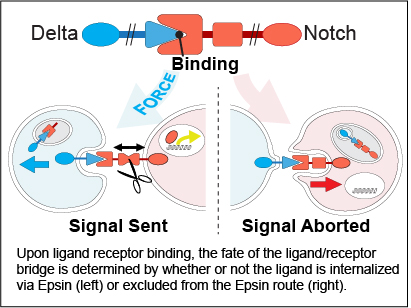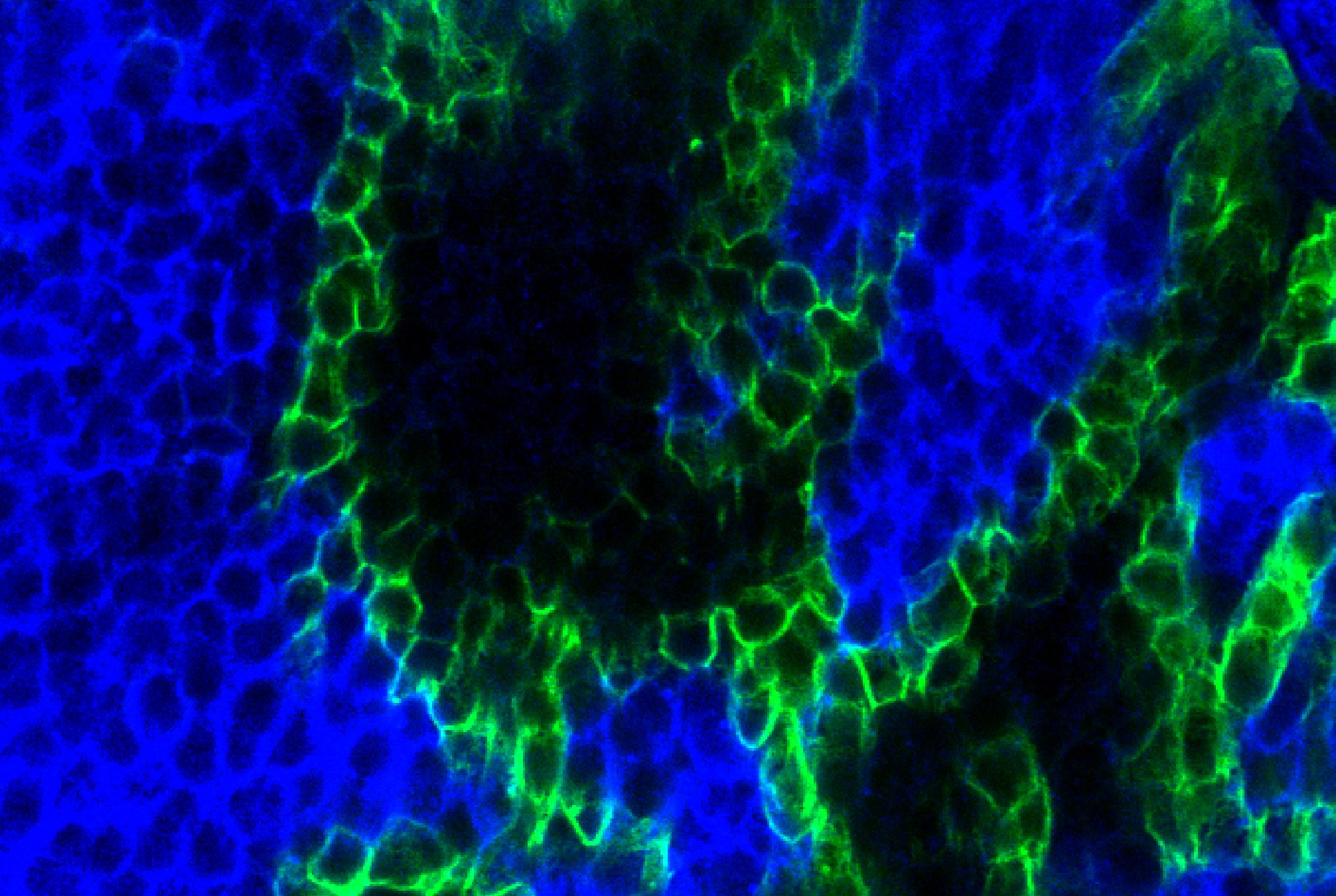Dissecting the mechanism of signaling across a ligand/receptor bridge – the Notch receptor.
Notch is a receptor used in all multicellular animals for cell fate decisions at numerous stages of development and in many aspects of physiology. Dysregulation of the receptor is involved in human diseases, including cancer. Notch is a single-pass transmembrane protein that signals through forming a bridge with its ligands, such as the Drosophila ligand Delta, presented on the surface of neighboring cells. Once the bridge is formed, the receptor is cleaved, allowing the cytosolic domain – a transcriptional activator – to gain access to target genes (below).

In my postdoc, I developed a suit of genetic tools to study the mechanism of Notch activation. We found that Notch is activated by force in vivo (Langridge and Struhl, 2017, Cell) and that a select endocytic pathway is necessary to provide this force. Our research also revealed that signaling via ligand/receptor bridges, like those involving the Notch receptor, is a much more complex form of communication than the simple textbook impression of a ligand binding to receptor and triggering its activation. Once a ligand/receptor bridge forms, I found that it is resolved in different ways depending on endocytic events operating on both sides of the bridge. These can preclude signal, leading to the entire bridge being engulfed into the receiving cell, or they can initiate a signal, by exerting an activating force across the bridge (below).

We are now studying these phenomena in more detail, to determine how they influence a number of ligand/receptor bridges that operate in diverse contexts, and find ways to exploit this insight to produce a range of synthetic ligand/receptor bridges of use in engineering at the tissue level. We aim to answer questions like:
Does endocytosis generated force have a role in other signaling pathways?
Multiple surface proteins of many different classes form intercellular bridges that signal in a wide variety of cellular processes, including neuronal guidance, planar polarity and cell-cell adhesion. In my lab, we are aiming to determine whether the phenonema we identified for Notch has a role in the signaling of these other bridges.
Can synthetic ligand/receptor bridges be used in vivo to engineer at the tissue level?
As part of the above work, we have created entirely synthetic ligand/receptor bridges that signal using a mechanism predicated on the Notch/Delta bridge (these are similar to the ‘Syn-Notch’ systen that has exciting therapeutic potential). Using this system we wish to determine how my synthetic bridges can be used to organize cell behavior and alter the morphology of a tissue.
